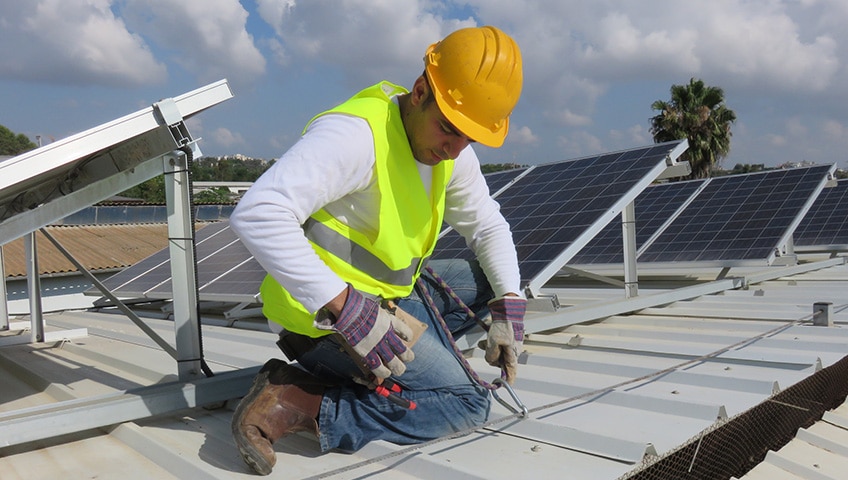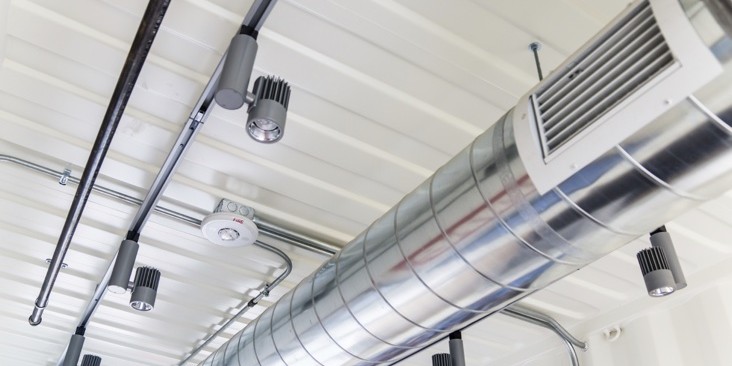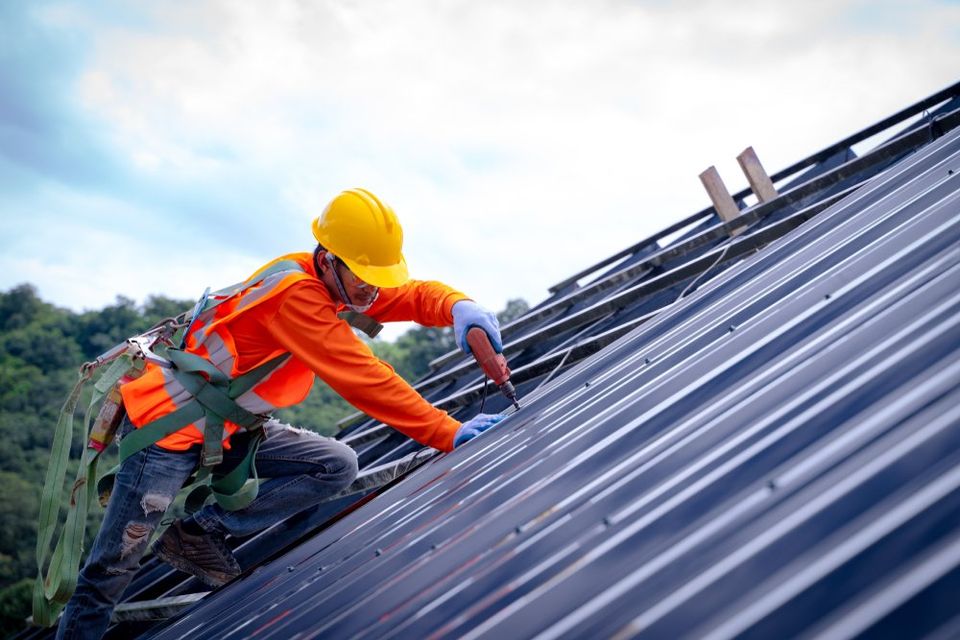The world of roofing, whether you believe it or not, is actually a pretty complex oneThere are different types of roofing, different materials used, and even different methods of installationOn top of that, there are tons of codes that contractors have to follow in order to ensure that the roof they’re putting on your home or business is up to par.
All of this complexity means that there’s a lot that can go wrong when it comes to roofing – and that’s why you need to make sure you’re working with a contractor who knows what they’re doing.
One thing that a lot of people don’t understand is why commercial roofing is so different from residential roofingAfter all, both types of roofs have to protect a building from the elements, right?
If that were the case, we wouldn’t need to write today’s articleThe fact is, though, that commercial roofing is a completely different beast from residential roofing.
In this article, we’re going to talk about some of the key ways that commercial roofing is different from residential roofing and why it requires a higher level of expertise.
What’s the Difference Between Commercial and Residential Roofing?
The best place to start trying to understand this subject is by first understanding what the main difference is between commercial roofing and residential roofingIn short, it all comes down to two things: size and weight.
Residential roofs are, on average, much smaller than commercial roofsThey also don’t have to support nearly as much weightThis may not seem like a big deal at first, but it actually has a pretty big impact on everything from the type of materials used to the way the roof is installed.
Here are some key features of residential roofs:
- They typically range in size from about 1,000 to 2,500 square feet
- They only have to support the weight of a few people at most
- They’re typically designed with beauty in mind.
- Are typically made up of shingles or other light-weight materials
Now, let’s take a look at some of the key features of commercial roofs:
- They can range in size from about 2,500 to 10,000 square feet or more
- They have to support the weight of many people and often heavy equipment as well
- They’re typically designed with function in mind over form.
- Can be made out of a variety of materials including metal, asphalt, rubber, and more.
Commercial and residential roofs can be as different as night and day, but that still doesn’t explain why commercial roofing is so much more complexTo understand that, we need to look at some of the specific challenges that commercial roofs face.
One of the biggest challenges that commercial roofs face is simply their sizeA typical residential roof might be 1,500 square feet or so, while a commercial roof can easily be 10 times that sizeThat means there’s a lot more surface area to worry about when it comes to things like leaks and damage from weather eventsStorm damage restoration becomes much more challenging with larger roofs.
Another big challenge for commercial roofs is the fact that they often have to support a lot more weight than residential roofs doThis is because they’re often used for things like storage or manufacturing, which can involve heavy equipment and materials.
This extra weight puts a lot of stress on the roof, which can lead to problems down the line if not properly taken into account during installation.
Larger Teams Mean More Leaders
Now that we understand the size issue, let’s look at an issue that has a bit more to do with logistics: the fact that commercial roofing jobs generally require larger teams.
While a residential roofing job might only require a few workers, it’s not uncommon for a commercial roofing job to need 10, 20, or even more workersThis is because there’s simply more surface area to cover and more work that needs to be done.
On a big roofing job, you’ll typically find the following levels of workers:
- Foremen:
- These are the leaders of the individual crews that make up the larger roofing teamThey’re responsible for making sure their crew stays on task and does quality work.
- Crew chiefs:
- These are experienced roofers who help lead smaller teams within a larger roofing crewThey often have a lot of input when it comes to things like material selection and installation methods.
- Roofers:
- The men and women who actually do the physically demanding work of installing the roof itselfRoofers must be strong, athletic, and have good stamina since they’ll often be working long hours in hot weather conditions.
- Laborers:
- These are the men and women who provide support to the roofersThey might do things like carrying materials or holding ladders
- Apprentices:
- These are roofers who are still in trainingThey typically work under the supervision of more experienced roofers and crew chiefs.

All of these people need to know what they’re doing and have the ability to communicate from the lowest level to the highestIn order for a commercial roofing job to go well, everyone needs to be on the same page.
This level of coordination can be a challenge on any roofing job, but it’s especially challenging on commercial roofing jobs because of the sheer size and scopeWith so many people involved, there’s a lot more room for miscommunication or things falling through the cracks.
It’s important to have a strong leader or leadership team in place when you’re dealing with a commercial roofing jobThis team should be able to keep everyone coordinated and on track, while also being available to answer any questions that come up along the way.
It’s also important to be sure that people that are highly specialized are on the scene because they’ll know what to look out forIn fact, the more people with a lot of experience the better because they’ll be able to catch any potential problems before they become actual problems.
Bigger Logistical Issues
Now, it’s important to note, manpower and communication aren’t the only logistical issues that come with commercial roofingIn fact, there are a whole host of other potential problems that can arise during the course of a commercial roofing job.
Here are some of the most common logistical issues that come up during commercial roofing jobs:
- Not having enough materials on hand:
- This is often an issue because commercial roofs are so large and require so much materialIt’s important to make sure you have a good estimate of how much material you’ll need before you start the job so you don’t run into this problem.
- Dealing with traffic:
- Commercial roofs are often located in busy areas where there’s a lot of foot traffic or vehicular traffic passing byThis can make it difficult for workers to get access to the roof and also create safety hazards if people aren’t carefulIt’s important to have a plan in place for dealing with this type of traffic before starting work on the roof.
- Dealing with bad weather:
- This is always a potential issue with any roofing job, but it’s especially important to be prepared for bad weather when working on a commercial roofThis is because commercial roofs are often very large and can take a long time to completeIf bad weather moves in, it could delay the job significantly.
- Working around other trades:
- Commercial roofing jobs often have to be coordinated with other trades, like electricians or HVAC workersThis can create logistical issues if there’s not a good plan in place for how everyone will work togetherIt’s important to communicate with the other trades and make sure everyone is on the same page before starting work.
A lot can go wrong when it comes to commercial roofing, but the key is to be prepared for anything that might come upBy having a good plan in place and being ready to deal with any potential problems, you can make sure that your commercial roofing job goes as smoothly as possible.
Of course, even the best-laid plans can sometimes go awryThat’s why it’s important to have a team in place that knows how to troubleshoot and solve problems on the flyHaving a team of experienced professionals who are able to think on their feet can make all the difference when things don’t go according to plan.
Understanding Roofing
Whether you’re considering getting into commercial roofing as a career or you’re a business owner and can’t figure out why it’s so much more expensive than residential roofing, hopefully, this article has given you a better understanding of the subject.
Commercial roofing is an incredibly complex process that requires a much higher level of expertise than residential roofingFrom the size and weight of commercial roofs to the logistical challenges they often present, there are many factors that contribute to the complexity of commercial roofing.
 Lab Diamond Tennis Bracelet: The Epitome of Elegance and Luxury
Lab Diamond Tennis Bracelet: The Epitome of Elegance and Luxury  Unveiling the Truth: Why Mined Diamonds Are Not Scarce
Unveiling the Truth: Why Mined Diamonds Are Not Scarce  Power Duo: SEO Agency Services and Website Design in Pittsburgh
Power Duo: SEO Agency Services and Website Design in Pittsburgh  Dress Rings: A Timeless Choice with Lab-Grown Diamonds and Man-Made Diamonds
Dress Rings: A Timeless Choice with Lab-Grown Diamonds and Man-Made Diamonds  What is the Penalty for Non-Filing of Income Tax Return?
What is the Penalty for Non-Filing of Income Tax Return?  Easiest Tribal Loans – Get Financial Aid with Just Two Clicks
Easiest Tribal Loans – Get Financial Aid with Just Two Clicks  Revolution in Retail: The Influence of HVAC Design on Customer Experience
Revolution in Retail: The Influence of HVAC Design on Customer Experience  Where to Sell My Designer Bag and Sell Gold in Melbourne: A Comprehensive Guide
Where to Sell My Designer Bag and Sell Gold in Melbourne: A Comprehensive Guide  How Long Does Adderall Stay in Your System? What You Need to Know
How Long Does Adderall Stay in Your System? What You Need to Know 